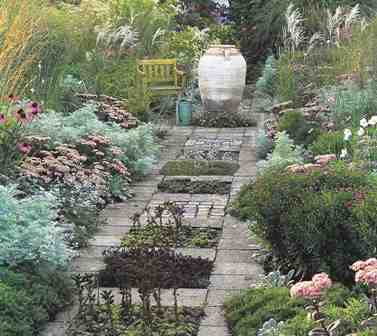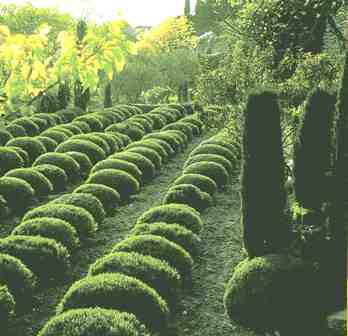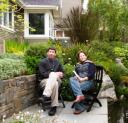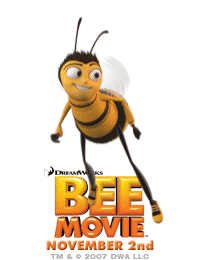 It finally arrived in my mailbox today: the January-February 2008 issue of Fine Gardening (issue No. 119) with the cover line, “Learn the secrets to an Abundant Border.”
It finally arrived in my mailbox today: the January-February 2008 issue of Fine Gardening (issue No. 119) with the cover line, “Learn the secrets to an Abundant Border.”
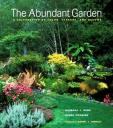 The genesis of this article, which is an adaptation of a chapter from The Abundant Garden, a book I created with photographer Barbara J. Denk in 2005 (Cool Springs Press), dates to a lunch I had with Steve Aitken. In July 2005, I was in New York City on a mission to find an agent to represent my next book project. I had rented a car and after one meeting with a potential agent, I drove to Newtown, Connecticut – in the POURING RAIN – where the Taunton Press-Fine Gardening Headquarters is based in a charming little hamlet.
The genesis of this article, which is an adaptation of a chapter from The Abundant Garden, a book I created with photographer Barbara J. Denk in 2005 (Cool Springs Press), dates to a lunch I had with Steve Aitken. In July 2005, I was in New York City on a mission to find an agent to represent my next book project. I had rented a car and after one meeting with a potential agent, I drove to Newtown, Connecticut – in the POURING RAIN – where the Taunton Press-Fine Gardening Headquarters is based in a charming little hamlet.
 I had planned on lunching with an editor-friend there, but when I arrived, I learned she had recently left Fine Gardening before having a chance to give me a head’s up. My “substitute” lunch date was to be then assistant editor Steve Aitken. I had never before met Steve, but after escorting me through the Taunton cafeteria where we sought refuge from the summer downpour, we sat down to lunch and a really wonderful conversation.
I had planned on lunching with an editor-friend there, but when I arrived, I learned she had recently left Fine Gardening before having a chance to give me a head’s up. My “substitute” lunch date was to be then assistant editor Steve Aitken. I had never before met Steve, but after escorting me through the Taunton cafeteria where we sought refuge from the summer downpour, we sat down to lunch and a really wonderful conversation.
Every author likes to think that people actually READ their words and do not just look at the pictures (I love my photographer-collaborators, but honestly, I do have a bit of an inferiority complex when comparing a block of my prosaic-looking text — 12 pt. black words in Helvetica or some other font on white paper — with full-bleed, four-color, vibrant or subtle images captured through a lens by a gifted visual-artist.)
So Steve made my day. Over lunch, he summarized the entire point of The Abundant Garden, highlighting key design ideas that I had hoped to achieve in the text. He blew me away. I have never had that experience before, knowing that someone read…really READ…the words that I wrote; the words that helped shape the idea of a book; the words that supported and explained Barbara’s glorious images.
From then on, I was a huge Steve Aitken fan. During our lunch meeting, he suggested I adapt some of my ideas in the book into an article for Fine Gardening. At the time, I had written several smaller, one- or two-page articles for the magazine, but never a full feature article, let alone the cover story. It was an idea that pleased me. And I fully intended to follow up on the opportunity he was offering.
Subsequent to our meeting, two cool things happened. First, Fine Gardening included The Abundant Garden on its list of the 10 best garden books for 2005. Second, Steve was promoted to managing editor of the magazine. Oh, I guess there is a third event that took place. In April 2006, we learned that my husband Bruce would accept a position in Southern California. My life turned upside down and I was barely able to follow up on my existing assignments and deadlines, let alone “chase” anything new.
Steve and I didn’t reconnect on the story idea right away. I like to chalk that up to the fact that our respective “plates” were full. But the timing was right when, only a few months after leaving Seattle for SoCal, I received a call from Daryl Beyers, a new FG assistant editor. Daryl told me that Steve + Co. were ready for me to start working on the article. The story focus: Creating an Abundant Border.
 We had several back-and-forth discussions about the shape the article would take, ending up with the exciting theme of “breaking rules in the border.” Just out today, the article features several of Barbara Denk’s photos from The Abundant Garden, as well as images from some of my other favorite photographers, including Allan Mandell and Saxon Holt. Other photographs were contributed by Stephanie Fagan, FG’s art director, and Daryl Beyers (who personally shepherded this piece from outline to publication).
We had several back-and-forth discussions about the shape the article would take, ending up with the exciting theme of “breaking rules in the border.” Just out today, the article features several of Barbara Denk’s photos from The Abundant Garden, as well as images from some of my other favorite photographers, including Allan Mandell and Saxon Holt. Other photographs were contributed by Stephanie Fagan, FG’s art director, and Daryl Beyers (who personally shepherded this piece from outline to publication).
Anyone who finds magazine or newspaper publishing a very s-l-o-w and tedious process will read this entry and be perhaps discouraged. How on earth should it take more than 2 years to turn an initial idea into a final article? (Don’t even get me started about the even lengthier book-birthing process!) Well, life gets in the way, timing is everything, and sometimes you just have to wait for all the pieces to fall into place as meant to be. Forcing, pushing, jockeying, chasing….it never really works. It’s a lesson I need to learn again and again. And this experience reminded me of the adage that “things work out for a reason.” Yes, they do.
Finally, please indulge me. Because of limited space (and for perhaps other reasons, such as it was purely a bit of self-indulgent writing in the first place!), the editors cut a final section of my original manuscript from the published article. Its genesis came from my father, Fred Prinzing, so I would like to include it here. You might have to read the published article for this to make sense, but here goes:
Everything Old is New Again
 Like most gardeners who have tackled a landscaping challenge, I often think my “solution” to a design problem is original or straight out of my imagination. So when I recently opened “The Book of Perennials,” a gift from my book-hound father, I had to admit that my “new” ideas about layered borders were anything but new! This little red-bound volume, first published in 1923, was written by Alfred C. Hottes, a magazine editor of the day.
Like most gardeners who have tackled a landscaping challenge, I often think my “solution” to a design problem is original or straight out of my imagination. So when I recently opened “The Book of Perennials,” a gift from my book-hound father, I had to admit that my “new” ideas about layered borders were anything but new! This little red-bound volume, first published in 1923, was written by Alfred C. Hottes, a magazine editor of the day.
 Here’s how he describes a garden border:
Here’s how he describes a garden border:
“A border may be formal or informal; the plants may be set in definite ribbon-like bands or placed in natural clumps. Generally, the latter method is to be preferred unless we are planning a prim garden of geometric form on a large scale.”
Hmm. Sounds awfully familiar. I was surprised and somewhat humbled to read further. Mr. Hottes had his own opinions about layered borders, not too different from my own:
“Obviously, the tall plants should be at the back of the border, the dwarf edging plants in front and those of medium height tucked in between the two extremes. Nevertheless, this rule should not be followed too strictly; otherwise the result will give a border which will be too monotonous. Allow bold groups of tall plants to come to the front of the border. For the best effects in the Springtime some of the earliest dwarf plants may be planted toward the center to give a mass of color throughout the width of the border.”
Well, I guess we should listen to an expert. Don’t take my word for it. In the 1920s, long before I tried breaking rules in the border, Mr. Hottes encouraged his readers to do just that.










